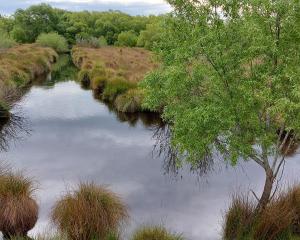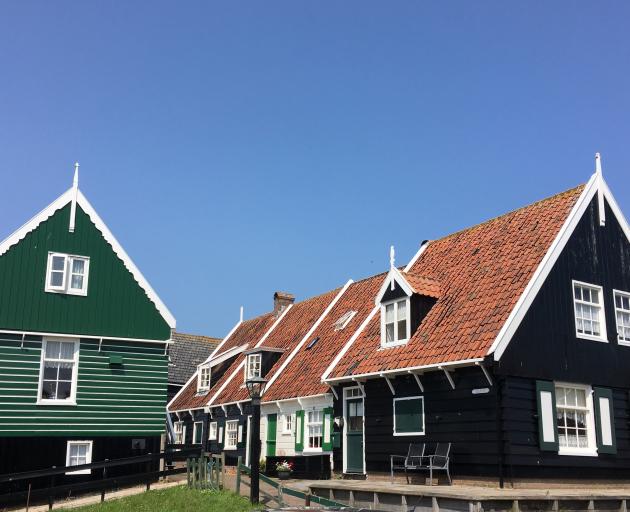
We had planned to cycle through the "polders" from Amsterdam to the fishing village of Volendam. It's not far, but discouragement from our excellent Airbnb host that we'd find it difficult navigating the city exit, meant we took up his kind offer to be driven instead.
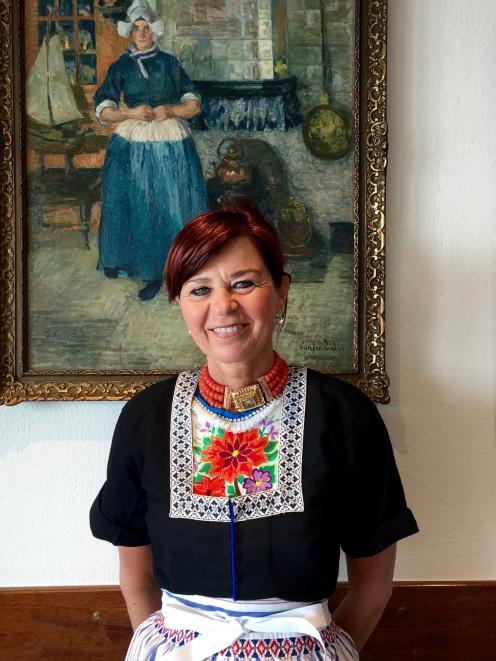
It's like a Dutch Masters painting as we head out by ferry on IJsselmeer lake, bound for Marken. There's a formation of herring gulls overhead and a murky, freshwater chop. You know it's not New Zealand as there's no punctuation of peaks. The white topsails of schooners, and in the distance the odd church steeple, are the tallest things.
Pretty and quaint is how Marken is described. Built on poles and man-formed knolls, called "werven", to protect from flooding, these black and green houses are unique. Isolation has meant traditions have been preserved. A highlight is the Marken Museum, which focuses on fishing heritage and the outstanding textile designs and needlework that feature in their traditional dress. Sadly, Marken's six smokehouses no longer exist, but eel, from IJsselmeer lake, remains the local delicacy. Eating eel every day only seemed right.
The Wooden Shoe Factory, in Marken, is one of only 12 left in the Netherlands. Once every village had a clog-maker.
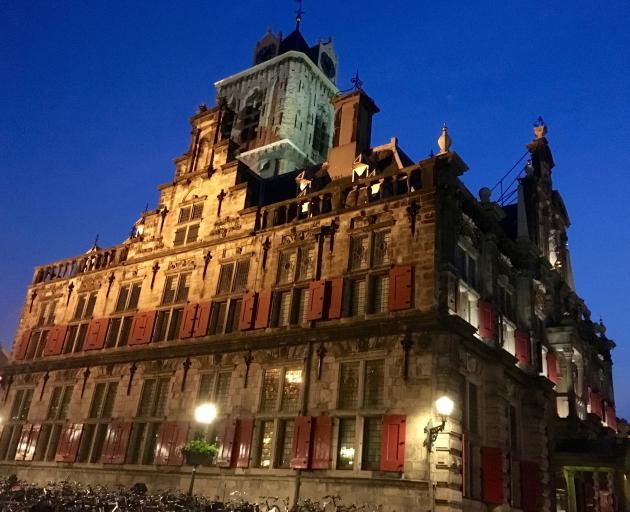
We did bike in Holland, confirming that the trails are tricky for travellers but the endless pathways are a joy to ride. Volendam village was still sleepy when we headed out along the dykes on our bikes bound for breakfast in Edam. Since the Dutch East India Company began exporting these golden orbs, Edam has been synonymous with cheese. Stopping off at the "markt" square cheese shop for tasting was essential.
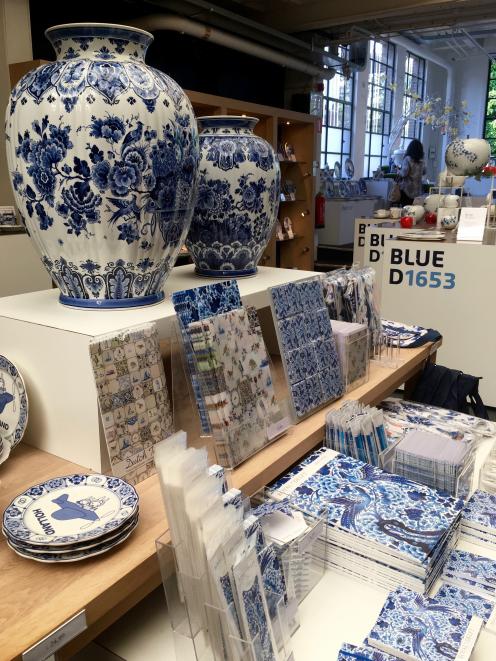
It is the "olde worlde" atmosphere of Dutch towns that makes them so charming. Houses clustered around the "kerks" and "markt" squares, early Dutch architecture created in late Gothic and Renaissance styles. Stepped gables, steep roofs pierced by dormers and carefully worked wrought iron. Painterly and picturesque with their, pillars, pilasters, pediments.
De Rijp is no exception, one of Holland's prettiest towns. Originally a port, it was prosperous in the Golden Age thanks to merchant trade. Its most famous son, Jan Leeghwater, the hydraulic engineer and windmill designer, helped turn the original island into 20,000 hectares of fertile farmland. Resting beside the traditional cheese weigh-house, in use for more than 400 years, our reward was a local omas appeltaart ice cream, before the 30km journey home.
We took the train to Delft, which is named after delven or digging, from all those canals. It's a lovely touch while we wait at our hotel that tea comes silver service and selection is made from a teak tea box. It's a residue from all those Dutch East India Company years, when it was the largest and most far-reaching trading company in the world.
The company's traders brought back fashionable Chinese blue and white ceramics and these imports posed such a threat to local potteries that they refined their clay techniques and emulated the chinoiserie style. When imports ceased due to war, Delft became the hub for Delftware. In its 17th century heyday, more than 32 potteries existed. Now there are only two.
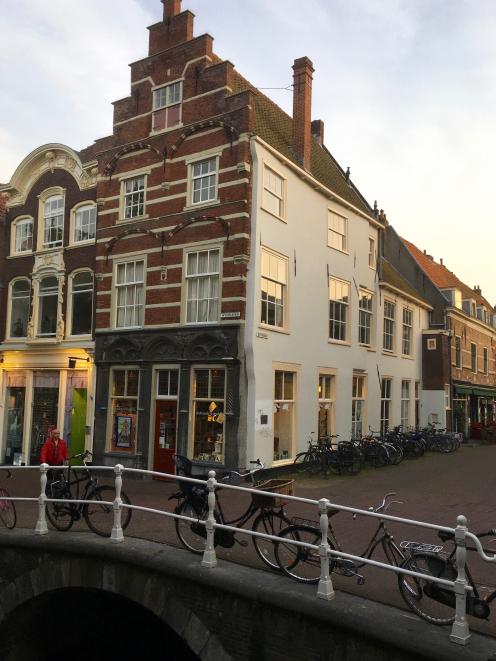
The Royal Delft factory, in operation since 1653, is more commercial. It employs Chinese-influenced patterns along with traditional Dutch land, seascape and contemporary designs.
Delftware takes a bit of beating and I have to try hard not to justify taking something home.
Delft is Johannes Vermeer's home town and the Vermeer Centrum Delft museum is comprehensive and informative on his life and work. Known as "the master of light", Vermeer's talent for pearly highlights set him apart. To view replicas of all 37 of his works was outstanding. They all feel surprisingly familiar and it is intriguing to learn the secrets behind some of his famous works. I recorded in my diary, "how utterly enjoyable this is".
William of Orange came here too. He is regarded as "the father of the nation" after leading a successful rebellion against the Spanish and establishing the basis of the parliamentary state and its principles - freedom of religion and freedom of expression - of which the Netherlands continues to be proud. Museum Prinsenhof, complete with bullet holes, is the site of his assassination in 1584.
On our final night in Delft we wander the canals, squeezing in a last serving of architecture and atmosphere. Lingering in the markt square, we view the Renaissance-style Stadhuis city hall, which reflects the beauty of the town, preserving as it does the spirit of the Golden Age.
On its lintel the Latin script reads: "This house hates roguery, loves peace, punishes the crimes, preserves the rights and honours the pious". Wise words from a country and culture that has stood the test of time.
Julie Orr-Wilson is a Dunedin-based travel writer.












